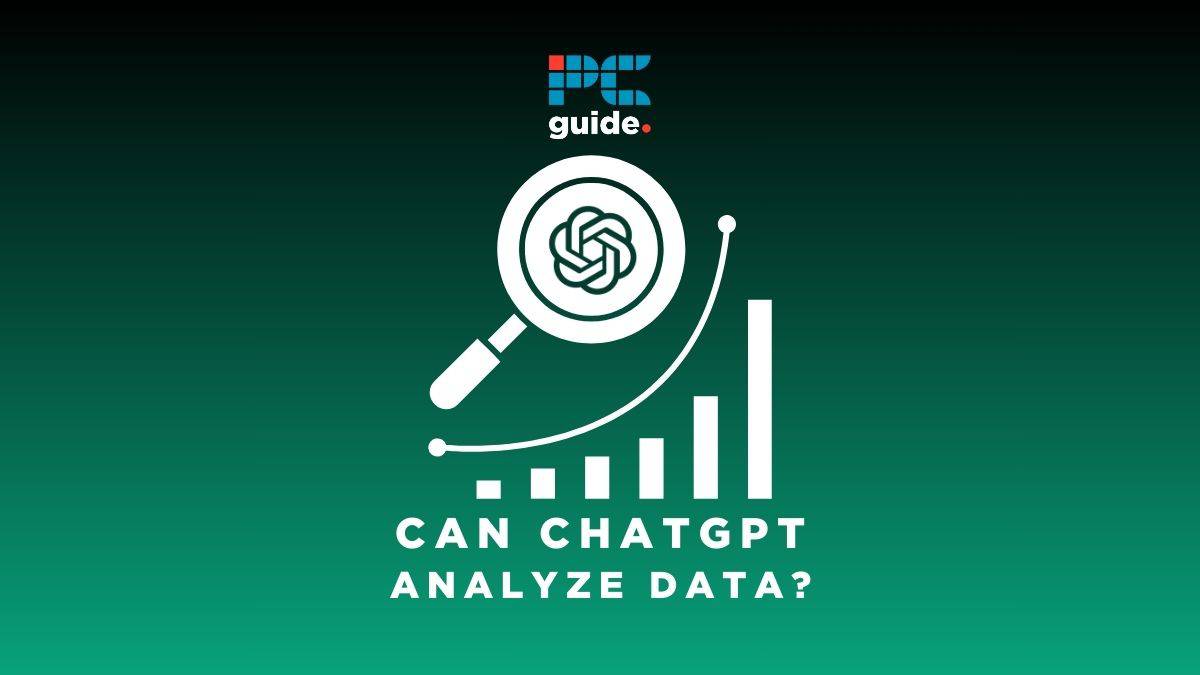Can ChatGPT analyze data?

Table of Contents
The world’s most popular LLM (Large Language Model) can process data in several interesting ways, but can ChatGPT analyze data and draw useful conclusions, faster than a human data analyst? ChatGPT is a powerful language model developed by OpenAI that can generate human-like responses to text inputs. With increasing interest in its capabilities, many people are wondering if ChatGPT can analyze data. In this article, we will explore this question and examine the abilities of ChatGPT in data analysis.
Can ChatGPT analyze data?
You must have an understanding of data science best practices and ChatGPT’s capabilities to appropriately use AI tools for data analytics. ChatGPT is primarily for natural language processing and text generation. It can understand human language and generate coherent responses based on input. However, data analytics requires some specialist tools. That’s not to say that AI can’t help – in fact, it’s one of the fields most ripe for artificial intelligence to improve!
Prime Day may have closed its doors, but that hasn't stopped great deals from landing on the web's biggest online retailer. Here are all the best last chance savings from this year's Prime event.
- Sapphire 11348-03-20G Pulse AMD Radeon™ RX 9070 XT Was $779 Now $719
- AMD Ryzen 7 7800X3D 8-Core, 16-Thread Desktop Processor Was $449 Now $341
- Skytech King 95 Gaming PC Desktop, Ryzen 7 9800X3D 4.7 GHz Was $2,899 Now $2,599
- LG 77-Inch Class OLED evo AI 4K C5 Series Smart TV Was $3,696 Now $2,996
- AOC Laptop Computer 16GB RAM 512GB SSD Was $360.99 Now $306.84
- Lexar 2TB NM1090 w/HeatSink SSD PCIe Gen5x4 NVMe M.2 Was $281.97 Now $214.98
- Apple Watch Series 10 GPS + Cellular 42mm case Smartwatch Was $499.99 Now $379.99
- AMD Ryzen 9 5950X 16-core, 32-thread unlocked desktop processor Was $3199.99 Now $279.99
- Garmin vívoactive 5, Health and Fitness GPS Smartwatch Was $299.99 Now $190
*Prices and savings subject to change. Click through to get the current prices.
Check out “What is ChatGPT and how can you use it?” for a comprehensive explanation of ChatGPT itself.
An EDA (Exploratory Data Analysis) workflow can be sped up substantially through the use of ChatGPT and other machine learning models. With a few simple prompts, a data analyst can take complex data and concurrently draw valuable insights. Generative AI is about to become every data scientist’s best friend.
OpenAI’s chatbot ChatGPT is one example of the LLMs (Large Language Models) making this possible. However, to use ChatGPT advanced data analysis, you’ll need plugins.
Limitations of ChatGPT in data analysis
While ChatGPT can process text and analyze the meaning of words and phrases, it cannot analyze data like specialized data analysis tools. For example, it cannot perform statistical analysis or generate visualizations based on data inputs.
ChatGPT as a Tool for Data Exploration
Despite its limitations, ChatGPT can be a useful tool for data exploration. By interacting with the model using natural language queries, users can ask questions and receive responses that help them better understand their data. However, it is important to note that ChatGPT’s responses may not always be accurate or comprehensive.
Using ChatGPT for data cleansing
One area where ChatGPT can be particularly useful is data cleansing. Data cleansing involves identifying and correcting errors in data, such as missing values, variables, or inconsistent formatting. Using natural language queries, users can concurrently identify potential errors in their data and receive suggestions for correcting them.
In terms of use cases, by using ChatGPT to produce clean data, you can easily identify trends without any outliers drawing you to unhelpful conclusions. Data quality is important for drawing informed decisions from a data set, and the latest version of ChatGPT ensures this with greater reliability than previous methods susceptible to human error.
ChatGPT and Natural Language Processing (NLP)
ChatGPT’s strength lies in its ability to understand and generate human-like responses to natural language queries. This makes it suitable for text data analysis tasks, such as sentiment analysis or topic modeling.
ChatGPT and machine learning
ChatGPT is based on machine learning algorithms that allow it to learn from large amounts of data. It can be trained on specific datasets to perform relevant tasks, such as language translation or text classification.
How to integrate ChatGPT with data analysis tools
ChatGPT is not a tool for data analysis. However, you can integrate it with data analysis tools. This will then enhance their capabilities as well. For instance, you can use it to generate natural language explanations of statistical results or to provide additional context for data visualizations.
Also, consider a premium subscription to ChatGPT Plus or ChatGPT Enterprise. Professionals can then use the AI chatbot seamlessly alongside Microsoft Excel via plugins.
More advanced users could consider using SQL code or even Python code to create their own data science tools and integrate them with ChatGPT via the OpenAI API.
If you are on the lookout for more detailed GA4 Real-time data we also recommend www.realtimeGA4.com
Conclusion
ChatGPT is not the best tool for data analysis. But you can use it for exploring and cleansing data. You can perform other tasks that involve analyzing text data.
Additionally, you can integrate it with data analysis tools by leveraging its natural language processing capabilities and machine learning algorithms. It can help enhance the capabilities of those tools to provide more meaningful insights into data.

